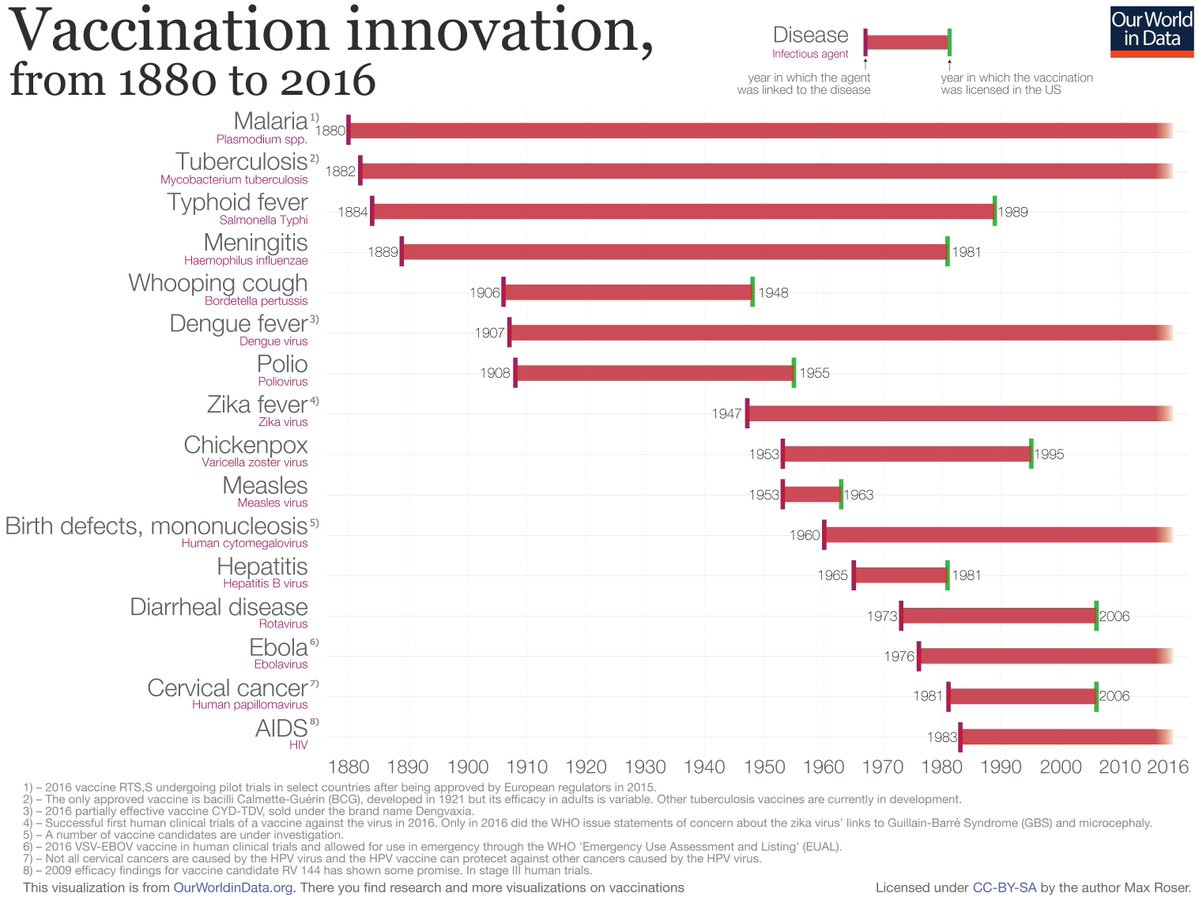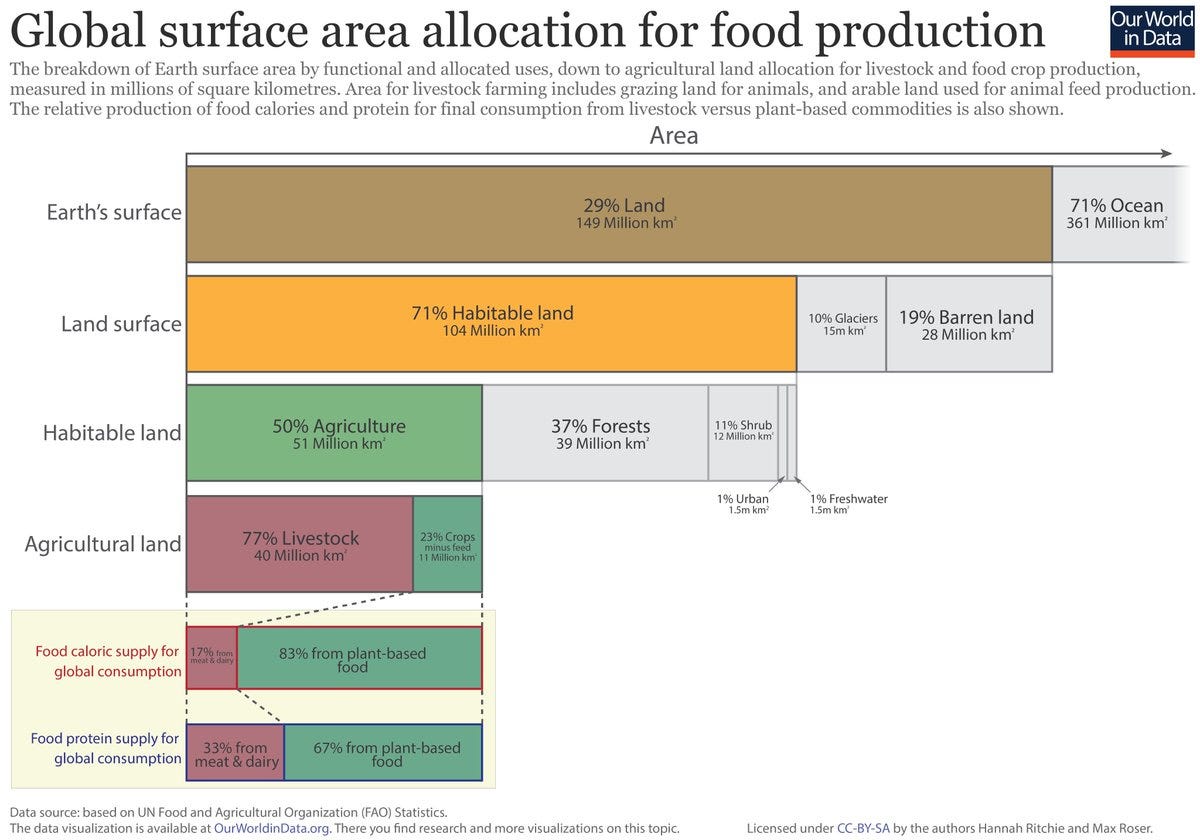And like that 2020 is done.
If someone in January’20 (outside China) had told us that we would be facing once in a century pandemic, stay in for months on end, see each other over video calls (and have zoom dates!), our offices would go remote (many permanently so), there would be widespread misery, and the stock markets would touch record highs, we would have likely avoided that person at the parties. And here we are, coping up somehow, with the end of this dystopia in sight.
2020 has been a hard year and most would be happy to see the back of it. It was also a year that allowed humans to make a generational leap in breakthrough technologies and that is what I want to focus on today.
COVID-19 is what an economist would euphemistically call an ‘exogenous shock’. As Morgan Housel (author of the contender for the year’s best book - The Psychology of Money) wrote in this masterful piece
The tail-end consequences of risk – like pandemics, and depressions – are what make the pages of history books. They’re all that matter. They’re all you should focus on. We spent the last decade debating whether economic risk meant the Federal Reserve set interest rates at 0.25% or 0.5%. Then 36 million people lost their jobs in two months because of a virus. It’s absurd.
Tail-end events are all that matter.
Once you experience it, you’ll never think otherwise.
It was absurd, how much the world was turned upside down. Yet, we adapted and even found ways to thrive. It’s the kind of thing that makes you believe in the resilience of our collective strength and fills you with hope about the miracles that scientific progress has allowed us to achieve.
First, the biggest winner of 2020 - Vaccines.
Vaccines have collectively done more to advance the cause of human health than most other interventions. But they are time-consuming and costly to produce. The process from end to end could take up to 15 years.
Viruses contain a core of genes made of DNA or RNA wrapped in a coat of proteins. To make the coat of protein, the DNA or RNA genes of the virus make messenger RNA (mRNA); the mRNA then makes the proteins. An mRNA of a specific structure makes a protein of a specific structure.
Some traditional vaccines use weakened virus, while others use just a critical piece of the virus’s protein coat. In the case of COVID-19, a piece called the spike protein is the critical piece.
Producing viruses in the lab to either weaken them or extract the critical protein is in itself a time-consuming process.
mRNA vaccines have the potential to upend the traditional vaccine. The simple premise is that if we knew the exact structure of the mRNA that made the critical piece of a virus’s protein coat, we could make that mRNA in a lab in large amounts relatively easily. This simple premise required decades of research to perfect, and it all came together in 2020.
There was 30 years of research on the SARS virus. When the SARS-COV2 virus hit, advances in genome sequencing technology allowed scientists in China to decode the structure of this virus within a few weeks. Scientists globally got to work in developing the vaccine and within weeks had produced enough to test on animals. In 11 months since the advent of COVID-19, the vaccines have been approved for human use.
It is awe-inspiring if you consider that the record for the fastest vaccine before this was for mumps, which took 4 years!
Armed with advances in mRNA, vaccines are being tested for Zika, Ebola, and even Cancer!
Second, plant protein. I have written a deep dive on it - The endgame for meat.
The value chain of cattle ranges from inputs (feed) to production (breeding) to processing (culling), to packing and distribution. All this so that our bodies can get protein molecules. The cost of those protein molecules is staggering.
50% of all habitable land is used for agriculture. 77% of that is used for rearing cattle and livestock which contributes less than 1/5th to the global calorie intake. The 11 million sq km used for crops, supply more calories and protein than the almost four-times larger area used for livestock.
The industry also happens to contribute an outsized amount to greenhouse gas (GHG) emissions. Consider that 11% of Australia's all GHG emissions are from direct livestock. Methane, which is the primary emission from the industry, also happens to be 25x more potent than carbon dioxide in trapping heat.
COVID-19 turned meat processing facilities into hotspots, this was accompanied by a fall in consumer demand due to health concerns, impacting large exporters such as India.
The plant protein industry came to the forefront.
How does plant protein work?
An illuminating part from a fantastic report by ReThinkX below (emphasis mine)
Micro-organisms exist naturally within macro-organisms, breaking down nutrient inputs to build useful outputs. For example, micro-organisms in the digestive tract of a cow help produce the protein and amino acids it needs to live and grow. Humans have manipulated micro-organisms in a more direct way through early experiments in fermentation. New technologies allow us to manipulate micro-organisms to a far greater degree. We can now unplug micro-organisms entirely from macro-organisms and harness them directly as superior and more efficient units of nutrient production. This is the second domestication of plants and animals. The first domestication allowed us to master macro-organisms. The second will allow us to master micro-organisms.
By ‘taming’ micro-organisms, we have moved production to the molecular level. That might sound innocuous but has profound implications. For one, the number of nutrients that we can produce effectively becomes limitless - a function of human imagination rather than being bound by the plant or animal kingdoms.
Once we can design ‘custom’ molecules, we can design food from the ground-up (pun intended).
Beyond Meat and Impossible have been the torchbearers. Viral videos of ‘taste test’ show that their burgers taste as good or sometimes better than original beef ones.
However, food is local. To really make a dent, these products have to be localized for different cuisines. 2020 was the year that saw plant protein products being localized for palettes globally. (Dominoes introduced a plant protein pizza in India, McDonald’s announced a McPlant menu for 2021, Nestle and Beyond Meat entered the booming plant protein market in China). Plant and alt protein startups globally attracted heavy investor interest.
Cows have historically been disrupted. Their utility is now mostly meat and milk. Meat is extravagant, wasteful, and at this point, simply not a good conduit for calorie intake. The investment and progress in 2020 will go some way in creating a dent in those use cases too.
Third, Clean energy.
50%+ of GHG emissions are from electricity and transport. The price of producing electricity from solar and wind has fallen by 89% and 71% in the last decade. It is now the cleanest AND the cheapest source of energy.
Due to COVID-induced shutdowns, the demand for electricity collapsed.
The grid operators turned to the cheapest form of energy to balance the grid. The share of renewables increased rapidly as a result. In <10 weeks, India increased its renewable energy consumption by ~45%.
All of this happened when the prices of fossil fuels were at historic lows. In the USA, the share of renewables consumption crossed coal for the first time in 130 years. The economics of renewables passed their most strenuous test.
The price of lithium-ion batteries has declined faster than predicted.


While the share price of TSLA was covered, the mundane mattered. Consumer EVs deliver a range of 400+ km. Electric trucks are being built, governments rolled out more progressive policies. The overall impact was that the consumer EV market bucked the overall slump in automotive demand and continued to stay resilient. In Europe, EVs tripled its market share!
The era of mass EVs is upon us, COVID-19 has only accelerated that shift.
Fourth, productivity.
One of the biggest economic puzzles of the 21st century has been the stagnation in global productivity.
There have been competing schools of thought on its cause.
A few believe that for all the tech enthusiasm, the recent inventions are simply not as transformative.
On the other hand, the productivity J curve formulated by researchers in MIT and UChicago posits that it takes time to work out how to use new technologies effectively. E.g. AI like electricity is a general-purpose technology, but it takes time and experiments to deploy them for their best use case.
Something incredible happened in 2020.
Years of investment in cloud technology and video conferencing platforms paid off handsome dividends as large portions of life and work moved online. Industries after industries adapted to a new way of business and labor productivity actually increased in 2020.
Why does it matter?
1. Increasing productivity is the surest way to increase income levels.
2. The comfort (with variances) in adopting new tech bodes well for many areas of emerging tech like AR, VR, Autonomous vehicles, 5G, Telehealth. We may be on the cusp of a sustained rise in productivity - a transformational prospect.
One thing that is true across all the progress is that almost all of it was a slow burn. It was years of incremental progress that all came together. 2020 though bleak, saw a lot of things came together in ways unimagined and a lot of groundwork being laid.
As Tyler Cowen argued in this great piece and I agree - the world got better and worse in 2020. In a bleak year, we made progress and science-inspired a sense of awe.
2020 taught me resilience, patience, and to be thankful for what I have. I started this newsletter as a way to focus my thoughts, make sense of the once in a generation event happening around me, and have some fun along the way (No, I did not consider baking sourdough bread).
I hope it has sparked some interesting thoughts in you and gave you interesting tidbits to munch on. Your thoughts, suggestions, and comments are always deeply appreciated. Have a great and healthy new year!
What should I write about? Share your thoughts at romitnewsletter@gmail.com or on Twitter, or leave a comment. Stay safe!












Hi Romit, happy new year! Glad to get the newsletter back in my inbox. To your third point, I still remain sceptical of the progress renewable energy can make in India. The demand is there, but widespread project delays, a policy that fluctuates every six months, companies waiting for government incentives in perpetuity while lobbying more than manufacturing, overreliance on China, and the States not paying their dues have and will plague its growth, even in the coming decade. Global investors are already pulling out, and banks are worried about defaults. We still can't get users to adopt smart or pre-paid metering, and as a result, theft and poor billing are far too common.
I do hope that your optimism works out for the sector, but the private sector and the government are in a wild west standoff. Everyone has ideas, nobody wants to invest money to get them to fruition.